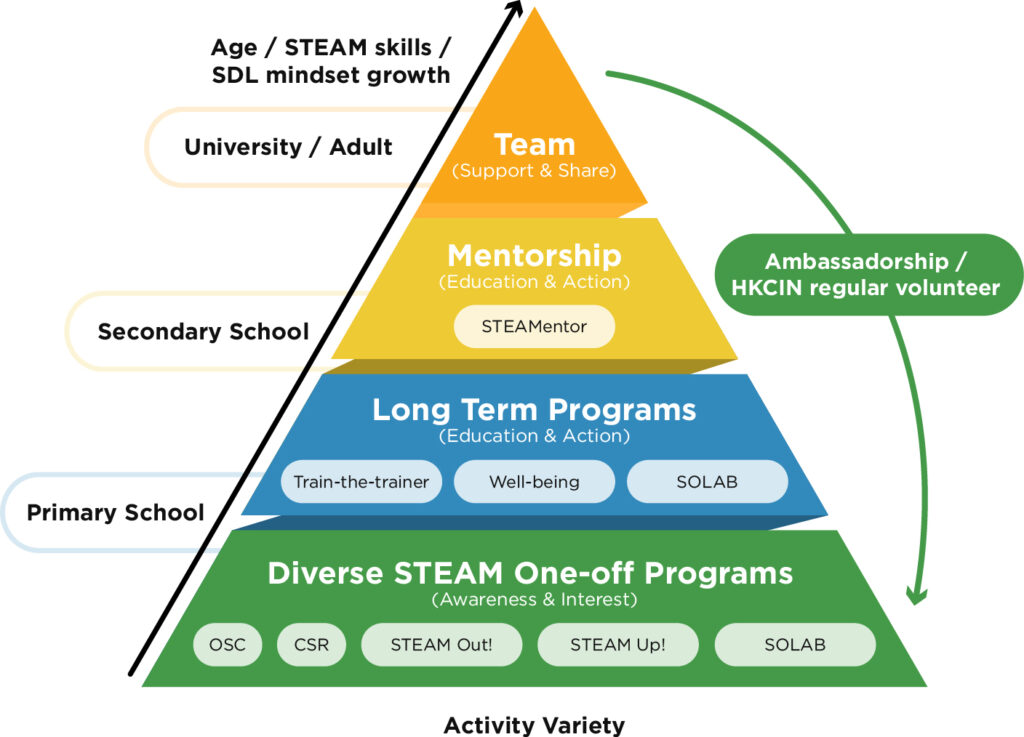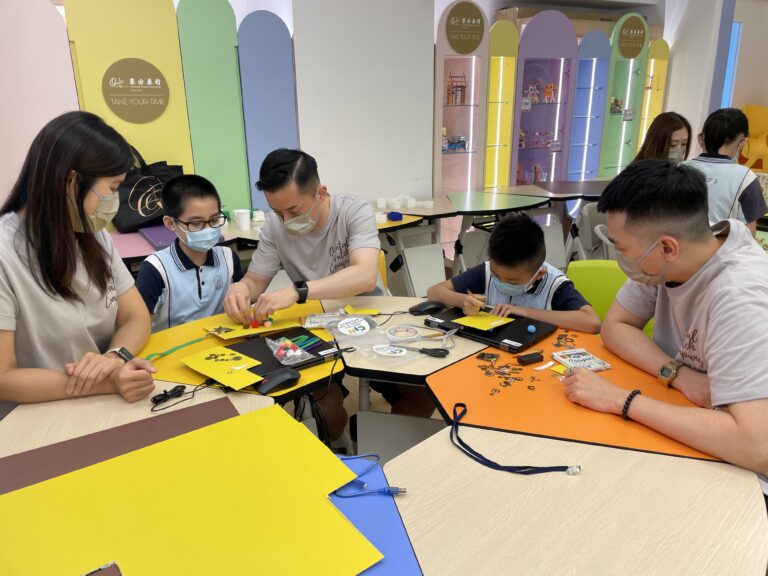Our STEAM Programs
Our current STEAM programs are geared towards empowering students through hands-on experiences, fostering essential 21st-century skills and self-directed learning. With this overarching goal, HKCIN has crafted programs at both Institutional Level and Individual Level, ensuring maximum impact.

Institutional Level
Our initiatives follow a “train-the-trainer” model, aimed at enhancing teachers’ STEAM teaching skills and enriching students’ STEAM education.
The first initiative, “OSC STEM Maker in School” (2020-2023), a two-year training program in Micro:bit and Thunkable for three underprivileged primary schools.
The second project, “OSC INventoo – STEM Inventors in School Project” (2023-2026), offers intensive training to three more primary schools, utilizing Arduino to create innovative smart-living solutions. These projects actively engage teachers, students, and parents, not only to enhance their skills but also to cultivate a mindset that recognizes the significance of STEAM education for a brighter future.


Individual Level
Our activities encompasses a diverse range of topics ranging from Sustainable Development Goals (SDGs) to well-being and life planning. Participants can enjoy visits to STEAM venues across Hong Kong, such as Science Park, electricity companies, and theme parks. Workshops include coding and 3D drawing, robotics and engineering, as well as financial planning.
Our STEAM Topics
Smart Living
- Innovations for future life
- Creative solutions to solve individual and communal daily problems
- Renewable energy & sustainability
Health and Wellbeing
- Life values for goal setting
- Time management for academic balance
- Wealth management for financial well-being
- Health management for physical well-being
Our SDL-based STEAM Model
What is SDL?
Why SDL in STEAM?
Self-directed Learning (SDL) plays a crucial role in children’s STEAM education as it promotes autonomy, curiosity, and critical thinking. By allowing children to take control of their learning, SDL empowers them to explore their interests, set goals, and develop problem-solving skills. It encourages independent thinking and a love for lifelong learning, essential qualities for success in STEAM fields where creativity, innovation, and adaptability are paramount. SDL in children’s STEAM education cultivates self-motivation and a deeper understanding of concepts, ensuring they are better equipped to tackle real-world challenges and contribute to scientific advancements.

